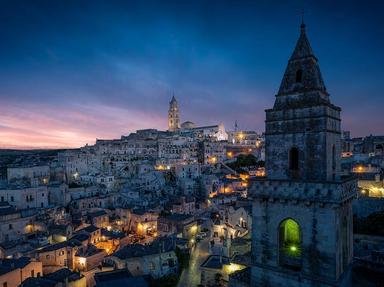Quiz Answer Key and Fun Facts
1. The flag of Milan has two opposing quarters. One of the quarters is the symbol of the House Visconti: the "biscione", which is an azure serpent swallowing a person (often said to be a Saracen). The other quarter was adopted after Gian Galeazzo Visconti purchased a diploma to become Duke of Milan by joining what grand organization of nations?
2. Here is the largest extent of the Duchy of Milan, which as you can see is located in northern Italy. Many Italian regions in the north came under their control, though they ultimately failed to reach into the peninsula past Rome. Which of the following regions was NOT under their control?
3. The Duchy of Milan was a bastion for Roman Catholicism, and in 1386, construction of the Duomo di Milano (Milan Cathedral) was started by Archbishop Antonio da Saluzzo, cousin of Milan's first duke, Gian Galeazzo Visconti. The duomo had many setbacks, with over sixty different architects over the years, some even brought in from France. In what year was the cathedral finally finished?
4. This image by Renaissance painter Tintoretto shows his nation's army in action. By the fifteenth century, the Italian Peninsula was being ruled and influenced by five major powers: Milan, Florence, Naples, the Papal States and what other nation which skirmished with Milan in the Wars of Lombardy?
5. In Renaissance Italy, it was common practice for the city-states not to have their own standing armies, but to hire Italian mercenaries from private "contractors". The Duchy of Milan also followed this practice; even one duke made a living this way before he was crowned. As seen in the image we have one such leader. What were the leaders of these mercenary groups called?
6. In 1447, Filippo Maria Visconti, the Duke of Milan, died suddenly, leaving no male heir and ending the long-ruling Visconti line. There were many claims from other lands such as Aragon, Naples, and Orleans, but Milan was able to keep itself independent, forming what short-lived republic?
7. The Duchy of Milan had experimented with republic governance, but after only three years, this shrewd Milanese mercenary captain seized power and named himself duke. What Milanese ruling house did he begin?
8. In a display of all he could offer the Duke of Milan if the monarch were to patronize him, what Renaissance inventor wrote a letter saying, "In case of need I will make big guns, mortars, and light ordnance of fine and useful forms, out of the common type"?
9. The story of sixteenth-century Milan is a story of foreign control and influence. Many different nations played a tug-of-war game with the duchy and it was often used as a pawn and bargaining chip in foreign treaties. Which of the following kingdoms did NOT at one time have control of Milan?
10. The Duchy of Milan was held as a constituent state by many other foreign powers, but it officially ceased to exist as an entity when it became part of the Cisalpine Republic due to what treaty from Napoleonic Europe?
Source: Author
trident
This quiz was reviewed by FunTrivia editor
bloomsby before going online.
Any errors found in FunTrivia content are routinely corrected through our feedback system.

